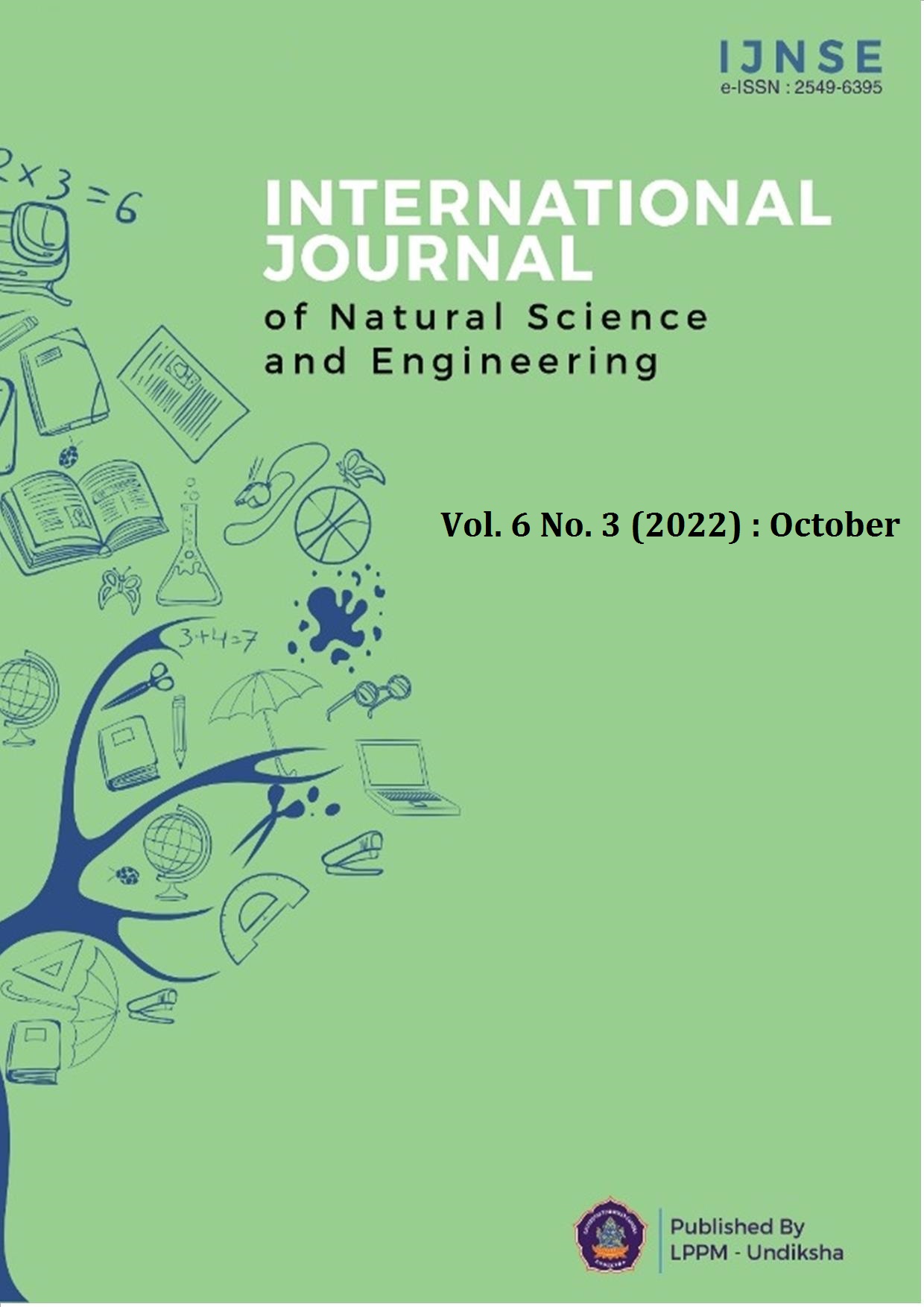The Role of Organization Maturity Level to Improve the Information System Capability
DOI:
https://doi.org/10.23887/ijnse.v6i3.53173Keywords:
Organization Maturity Level, ERP Implementation Approach, IS CapabilityAbstract
Organization maturity level is rarely considered when adopted a new technology. Aim of this study is to find the role of organization maturity level in order to improve the information system (IS) capability through ERP implementation approach. There are four variables involved on this study, namely: ERP drives Business Process Reengineering (BPR) (X1), BPR drives ERP (X2) as independent variables, organization maturity level (Y) as a moderating variable, and IS capability (Y1) as a dependent variable. We applied the path analysis to identify direct and indirect effect between ERP implementation approach and IS capability through organization maturity level. There are 277 key individuals from 37 different organization which is represented 10 industrial sectors responded to the questionnaires. The response rate for this survey research is 39.57% from 700 questionnaires which were distributed. Survey result shows that organization maturity level has a major role which can improve to better IS capability in organization. It is shown that a direct effect between X1 and Y1 (ρY1X1=0.331) is lower than an indirect effect between X1 and Y1 through Y (ρYX1 and ρYY1 = 0.369). Whereas, direct effect between X2 and Y1 (ρY1X2=0.096) is lower than indirect effect between X2 and Y1 through Y (ρYX2 and ρYY1 = 0.233). It can be concluded that the organization has to put a more effort on organization maturity level in order to gain a better IS capability, especially when it uses BPR drives ERP approach to implement the ERP system.
References
Abdelghaffar, H. (2012). Success factors for ERP implementation in large organizations: the case of Egypt. The Electronic Journal of Information Systems in Developing Countries, 52(1), 1–13. https://doi.org/10.1002/j.1681-4835.2012.tb00369.x. DOI: https://doi.org/10.1002/j.1681-4835.2012.tb00369.x
Aydiner, A. S., Tatoglu, E., Bayraktar, E., & Zaim, S. (2019). Information system capabilities and firm performance: Opening the black box through decision-making performance and business-process performance. International Journal of Information Management, 47(July 2018), 168–182. https://doi.org/10.1016/j.ijinfomgt.2018.12.015. DOI: https://doi.org/10.1016/j.ijinfomgt.2018.12.015
Bhatti, T. R. (2005). Critical success factors for the implementation of enterprise resource planning (ERP): empirical validation. The Second International Conference on Innovation in Information Technology, 1–10.
Bi, R., Smyrnios, K. X., & Kam, B. (2010). Information system capabilities as a driving force in enhancing organizational performance: An empirical study. PACIS 2010 - 14th Pacific Asia Conference on Information Systems, January, 603–614.
Carvalho, J. V., Rocha, Á., Vasconcelos, J., & Abreu, A. (2019). A health data analytics maturity model for hospitals information systems. International Journal of Information Management, 46, 278–285. https://doi.org/10.1016/j.ijinfomgt.2018.07.001. DOI: https://doi.org/10.1016/j.ijinfomgt.2018.07.001
Cheng, E. Y., & Wang, Y. J. (2006). Business Process Reengineering and ERP systems benefits. Proceedings of the 11th Annual Conference of Asia Pacific Decision Science, pp.201-213.
Chung, B. Y., Skibniewski, M. J., Lucas Jr, H. C., & Kwak, Y. H. (2008). Analyzing enterprise resource planning system implementation success factors in the engineering–construction industry. Journal of Computing in Civil Engineering, 22(6), 373–382. DOI: https://doi.org/10.1061/(ASCE)0887-3801(2008)22:6(373)
Daniel, O. E. (2000). Enterprise Resource Planning System (Systems, Life Cycle, Electronic Commerce, and Risk). Cambridge University Press.
Dantes, G. R. (2010). Measurements of key success factors on Enterprise Resource Planning (ERP) implementation. IBIMA Business Review, 2010. https://doi.org/10.5171/2010.976753.
Dantes, G. R., & Hasibuan, Z. A. (2011). The impact of Enterprise Resource Planning (ERP) Implementation. IBIMA Business Review Journal, 2011. https://doi.org/10.5171/2011.210664. DOI: https://doi.org/10.5171/2010.976753
Davenport, T. H. (2000). Mission Critical (Realizing The Promise of Enterprise Systems). Harvard Business School Press.
Ehie, I. C., & Madsen, M. (2005). Identifying critical issues in enterprise resource planning (ERP) implementation. Computers in Industry, 56(6), 545–557. https://doi.org/10.1016/j.compind.2005.02.006. DOI: https://doi.org/10.1016/j.compind.2005.02.006
Faccia, A., & Petratos, P. (2021). Blockchain, enterprise resource planning (ERP) and accounting information systems (AIS): Research on e-procurement and system integration. Applied Sciences, 11(15). https://doi.org/0.3390/app11156792. DOI: https://doi.org/10.3390/app11156792
Febrianto, T., & Soediantono, D. (2022). Enterprise Resource Planning (ERP) and Implementation Suggestion to the Defense Industry: A Literature Review. Journal of Industrial Engineering & Management Research, 3(3), 2722–8878. http://www.jiemar.org.
Feeny, D. F., & Willcocks, L. P. (1998). Core IS capabilities for exploiting information technology. Sloan Management Review, 39(3), 9–21.
Gargeya, V. B., & Brady, C. (2005). Success and failure factors of adopting SAP in ERP system implementation. Business Process Management Journal, 11(5), 501–516. https://doi.org/10.1108/14637150510619858. DOI: https://doi.org/10.1108/14637150510619858
Katuu, S. (2020). Enterprise Resource Planning: Past, Present, and Future. New Review of Information Networking, 25(1), 37–46. https://doi.org/10.1080/13614576.2020.1742770. DOI: https://doi.org/10.1080/13614576.2020.1742770
Luo, W., & Strong, D. M. (2004). A framework for evaluating ERP implementation choices. IEEE Transactions on Engineering Management, 51(3), 322–333. DOI: https://doi.org/10.1109/TEM.2004.830862
Lutfi, A., Alshira’h, A. F., Alshirah, M. H., Al-Okaily, M., Alqudah, H., Saad, M., Ibrahim, N., & Abdelmaksoud, O. (2022). Antecedents and Impacts of Enterprise Resource Planning System Adoption among Jordanian SMEs. Sustainability (Switzerland), 14(6). https://doi.org/10.3390/su14063508. DOI: https://doi.org/10.3390/su14063508
Marchand, D. A., Kettinger, W. J., & Rollins, J. D. (2000). Information orientation: people, technology and the bottom line. MIT Sloan Management Review, 41(4), 69.
Markus, M. L., & Tanis, C. (2000). The enterprise systems experience-from adoption to success. Framing the Domains of IT Research: Glimpsing the Future through the Past, 173(2000), 207–173.
Odważny, F., Wojtkowiak, D., Cyplik, P., & Adamczak, M. (2019). Concept for measuring organizational maturity supporting sustainable development goals. LogForum, 15(2). https://doi.org/http://dx.doi.org/10.17270/J.LOG.2019.321. DOI: https://doi.org/10.17270/J.LOG.2019.321
Park, K. O. (2018). The relationship between BPR strategy and change management for the sustainable implementation of ERP: An information orientation perspective. Sustainability (Switzerland), 10(9). https://doi.org/10.3390/su10093080. DOI: https://doi.org/10.3390/su10093080
Pattanayak, S., & Roy, S. (2015). Synergizing Business Process Reengineering with Enterprise Resource Planning System in Capital Goods Industry. Procedia - Social and Behavioral Sciences, 189, 471–487. https://doi.org/10.1016/j.sbspro.2015.03.194. DOI: https://doi.org/10.1016/j.sbspro.2015.03.194
Porter, M. . (1985). Competitive Advantage (Creating and Sustaining Superior Performance). The Free Press.
Puspitasari, W., Saputra, M., & Witjaksono, R. W. (2021). Identification and Indicators of ERP Implementation Success Factor – a Literature Review. International Journal of Innovation in Enterprise System, 5(02), 109–121. https://doi.org/10.25124/ijies.v5i02.132. DOI: https://doi.org/10.25124/ijies.v5i02.132
Roldán, J. L., Felipe, C., & Leal-Rodríguez, A. L. (2016). Information systems capabilities and organizational agility: understanding the mediating role of absorptive capacity when influenced by a hierarchy culture. September 2016. https://doi.org/10.3990/2.332. DOI: https://doi.org/10.3990/2.332
Shang, S., & Seddon, P. B. (2000). A Comprehensive Framework for Classifying the Benefit of ERP Systems. Americas Conference on Information System.
Somers, T. M., & Nelson, K. G. (2004). A taxonomy of players and activities across the ERP project life cycle. Information & Management, 41(3), 257–278. https://doi.org/10.1016/S0378-7206(03)00023-5. DOI: https://doi.org/10.1016/S0378-7206(03)00023-5
Strugar, R. A. (2019). Business process reengineering (BPR) for enterprise resource planning (ERP) implementation in the construction sector [Aalborg University].
Thanh, N. Van. (2022). Designing a MCDM Model for Selection of an Optimal ERP Software in Organization. Systems, 10(4). https://doi.org/10.3390/systems10040095. DOI: https://doi.org/10.3390/systems10040095
Tsai, W. H., Chien, S. W., Hsu, P. Y., & Leu, J. D. (2005). Identification of critical failure factors in the implementation of enterprise resource planning (ERP) system in Taiwan’s industries. International Journal of Management and Enterprise Development, 2(2), 219–239. https://doi.org/10.1504/IJMED.2005.006312. DOI: https://doi.org/10.1504/IJMED.2005.006312
Ullah, A., Baharun, R., Nor, K. M., Siddique, M., & Sami, A. (2018). Enterprise Resource Planning (ERP) Systems and User Performance (UP). Future of Marketing and Management, August.





